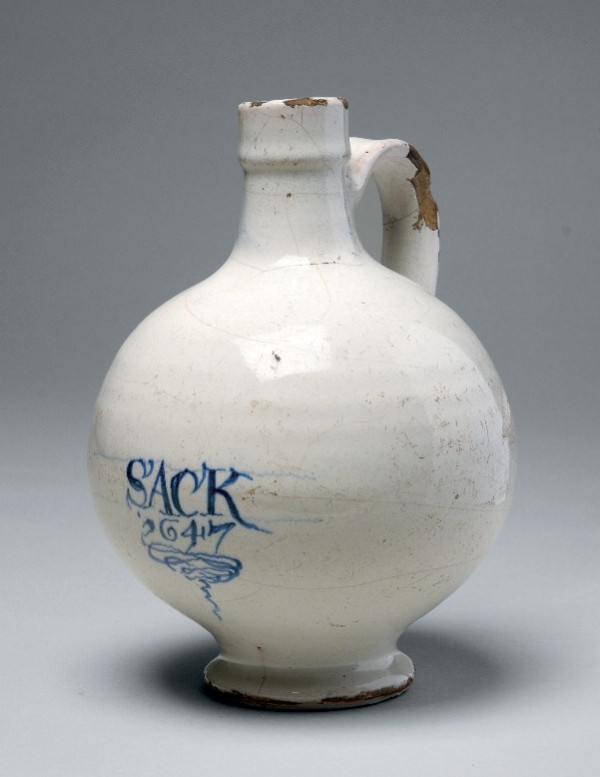
Bottle, probably Southwark, London, England, 1647. Tin-glazed earthenware. H. 8". (Temple Newsam House, Holmes collection, acc. no. 2011.0329; unless otherwise noted, all objects and photography courtesy of Temple Newsam House.)

Porringer, probably Southwark, London, England, 1675–1700. Tin-glazed earthenware. L. including handle 7 3/4". (Holmes collection, 1980.0051.)
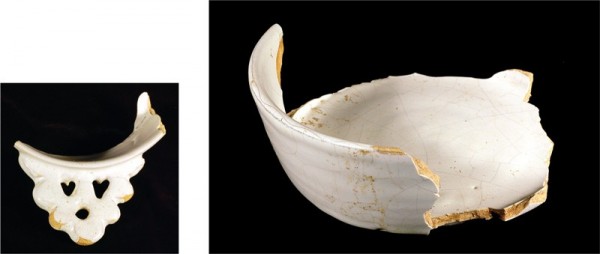
Porringer fragments, probably Southwark, London, England, 1670–1710. Tin-glazed earthenware. (Courtesy, Lost Towns Project, Annapolis, Maryland.) Porringers with the double-heart and round-hole handle have been uncovered at several archeological sites on the Mid-Atlantic seaboard, including Williamsburg, Virginia, and the Western Shore of Maryland. This one was excavated from Homewood’s Lot.
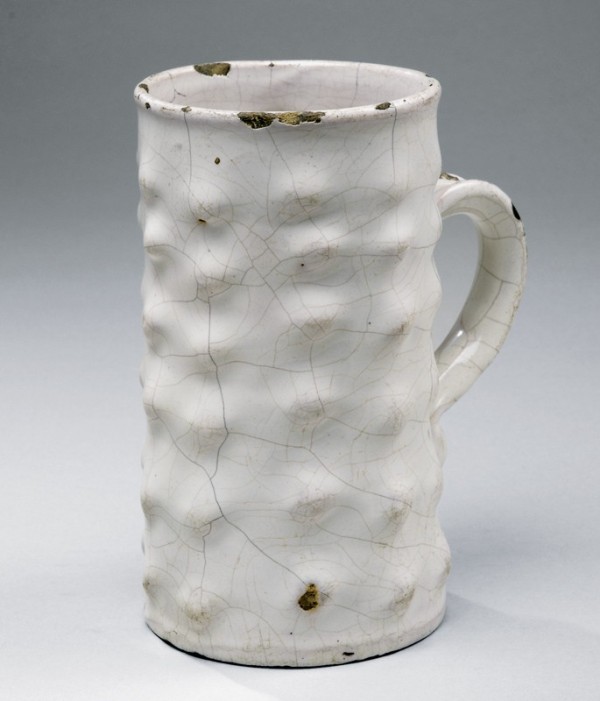
Mug, probably Southwark, London, England, 1650–1660. Tin-glazed earthenware. H. 6 1/2". (Holmes collection, 1890.0006.)
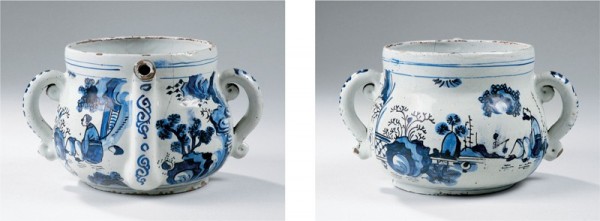
Posset pot, London, England, ca. 1680. Tin-glazed earthenware. H. 5". (Holmes collection, 1890.0004.)
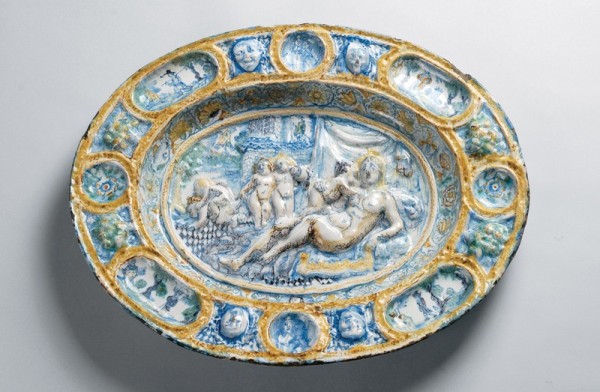
Dish, possibly “WP” potter, Pickleherring or Montague Close Potteries, Southwark, London, England, 1661–1688. Tin-glazed earthenware. D. 18 1/2". (Holmes collection, 1985.0035.) The dish depicts La Fécondité and includes portraits of Charles II, James II, and Oliver Cromwell. Dishes like this were modeled after ceramics made by Bernard Palissy in the sixteenth century.
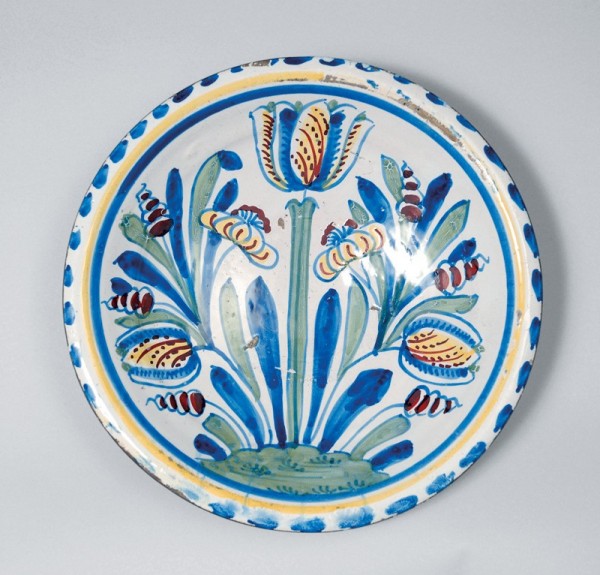
Dish, tin-glazed earthenware, Bristol or Brislington, England, 1675–1725. D. 13 1/4". (Hollings bequest, 1947.0016.0486.) Painted with tulips and lesser botanicals in varying stages of bloom. The rim is decorated with blue dashes.

Dish, probably Bristol, England, 1705–1712. Tin-glazed earthenware. D. 13 3/4". (Hollings bequest, 1947.0016.0485.) Decorated with a blue-dashed rim and a full-length polychrome portrait of Queen Anne.
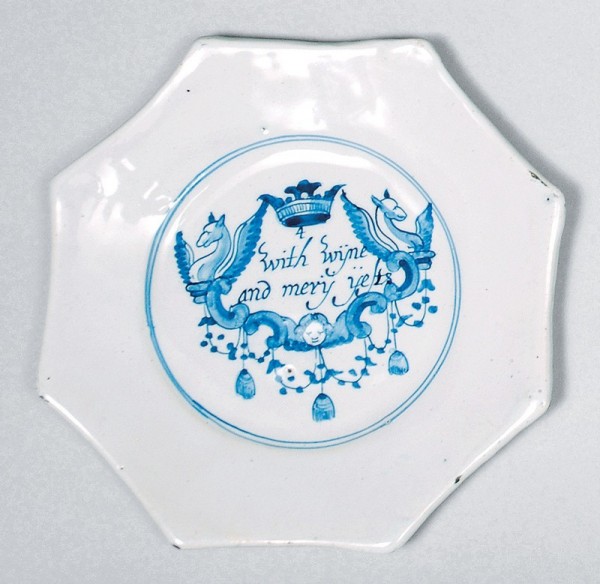
Plate, London, England, ca. 1680. Tin-glazed earthenware. D. 7 1/2". (Hollings bequest, 1947.0016.0483.4.) This plate is one of a set of six tin-glazed earthenware plates decorated with the so-called Merryman rhymes.

Plate, London, England, or the Netherlands, ca. 1680. Tin-glazed earthenware. D. 7 1/2". (Hollings bequest, 1947.0016.0483.5.) The set from which this plate comes is unusually colored in ochre and manganese, possibly by Dutch artists working in London.
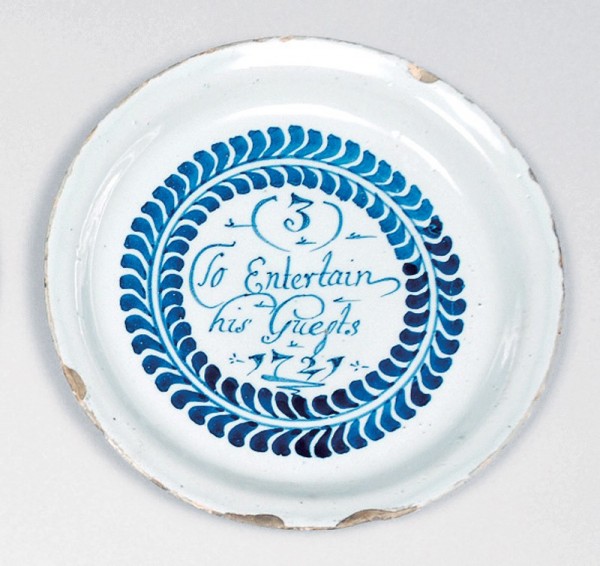
Plate, Bristol or London, England, 1721. Tin-glazed earthenware. D. 8 1/8". (Hollings bequest, 1947.0016.0484.3.) One of six plates from another Merryman set.
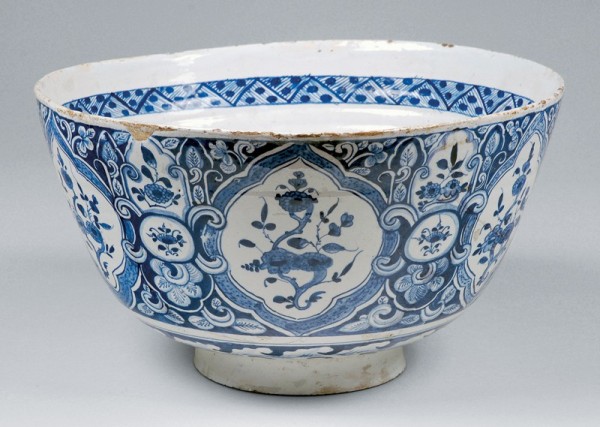
Punch bowl, possibly Bristol or Brislington, England, ca. 1732. Tin-glazed earthenware. H. 13 1/2". (Holmes collection, 1973.0012.) The bowl is painted with blue enamel decoration and an oval cartouche of James Edward Stuart, Prince of Wales (see fig. 13).
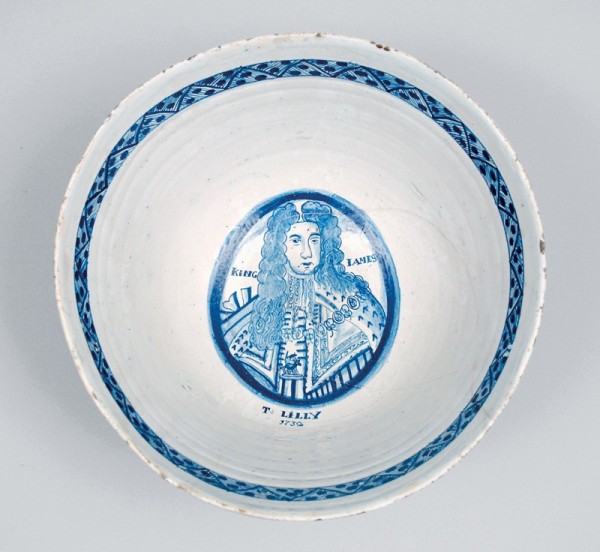
Oval cartouche inside the punch bowl illustrated in fig. 12. It depicts “The Old Pretender” James Edward Stuart, after a 1732 painting by T. Lilly.
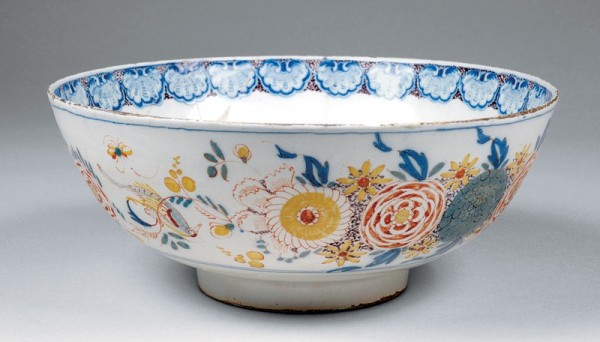
Punch bowl, Liverpool, England, ca. 1760. Tin-glazed earthenware. D. 12". (Holmes collection, 1979.0037.) The exterior is decorated with Fazakerley colored birds and flowers.

Interior of the punch bowl illustrated in fig. 14.

Teapot, probably London, England, 1750–1760. Tin-glazed earthenware. H. 4 1/2". (Hollings bequest, 1947.0016.0478.) The teapot with molded handle and spout is painted in blue with chinoiserie scenes.

Pair of wall pockets, Liverpool, England, 1760–1770. Tin-glazed earthenware. H. 7 3/4". (Hollings bequest, 1947.0016.0480.) Each wall pocket is molded and painted in enamels with birds and foliage.

Mug, Liverpool, England, ca. 1760. Tin-glazed stoneware. H. 5 1/8". (W. Ambrose Harding collection, 1984.0040.) The painted enamels depict exotic birds and foliage.

Hand warmer, possibly Faenza, Italy, 17th century. Tin-glazed earthenware. L. 8 1/2". (Holmes collection, 2011.0327.)

Jan II van Grevenbroeck (Italian, 1731–1807), “Courtesan” from Gli Abiti De Veneziani, vol. 3, pl. 159, 1750–1807. Watercolor on laid(?) paper, 11 x 11". (Courtesy, Museo Correr, Venice.) The Italian Renaissance courtesan depicted in the painting wears a shoe similar in style and decoration to the hand warmer illustrated in fig. 19.
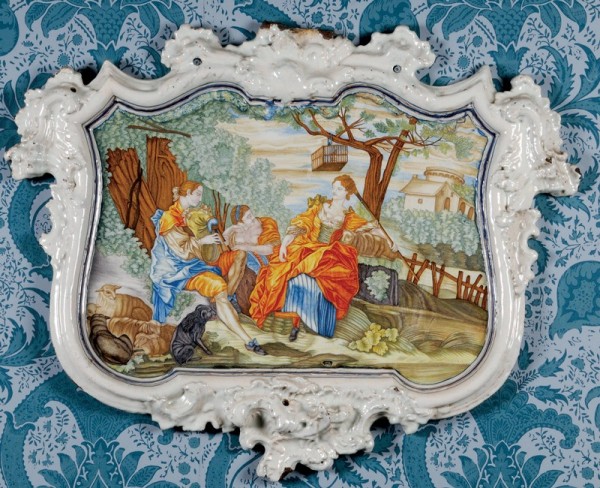
Wall plaque, Alcora Ceramic Factory, Alcora, Spain, ca. 1750. Tin-glazed earthenware. 21 1/2 x 34". (Frank Savery, Esq. bequest, 2011.0324.0002–003.) This plaque depicts Les amours pastorales, after a scene by French artist François Boucher (1703–1770).
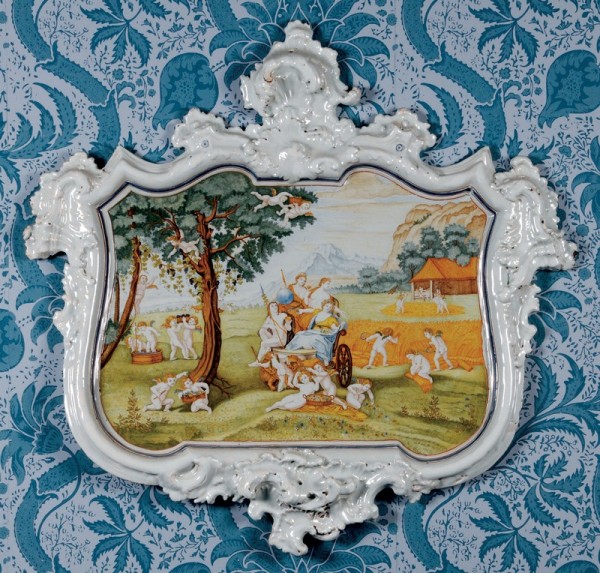
Wall plaque, Alcora Ceramic Factory, Alcora, Spain, ca. 1750. Tin-glazed earthenware. 21 1/2 x 34". (Frank Savery, Esq. bequest, 2011.0324.0002–003.)
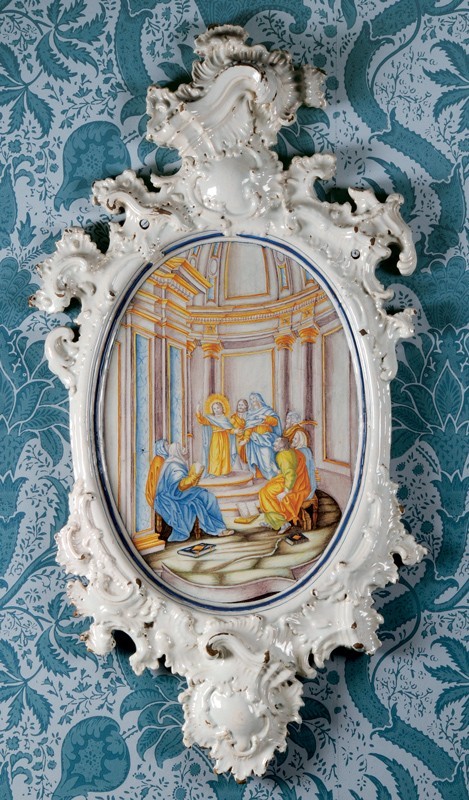
Wall plaque, Alcora Ceramic Factory, Alcora, Spain, ca. 1750. Tin-glazed earthenware. 33 x 19". (Frank Savery, Esq. bequest, 2011.0324.0001.)
